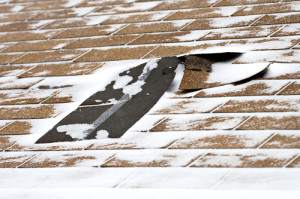Quick! Prepare Your House For Winter Weather

According to the Insurance Information Institute, water damage, which includes damage from frozen and burst pipes accounts for roughly 21 percent of all homeowner insurance claims. The average claim amount is roughly $5,500.
Winter weather can be hard on your house as well as your homeowner’s policy. Frozen pipes, ice dams and falling trees can lead to expensive claims and in many cases a rate increase. It pays to not only prepare your home for winter but also maintain it properly during the winter season to help prevent damage.
According to the Insurance Information Institute, water damage, which includes damage from frozen and burst pipes accounts for roughly 21 percent of all homeowner insurance claims. The average claim amount is roughly $5,500.
Here are a few tips on how to protect your home during the winter months:
Frozen Pipes
While the damage to your home caused by a frozen or burst pipe will be covered by your homeowners policy, it can be severe and any large claim on your policy will often result in a premium increase. The following steps will help minimize the risk.
- Right Temperature – Experts recommend keeping your house at a minimum of 65 degrees during the winter. The temperature inside the walls is often much colder and anything less than 65 degrees could result in a frozen pipe.
- Disconnect Hoses – One of the most common reasons for a burst pipe is leaving hoses connected to outside spigots. Remove all hoses when the weather starts to get cold.
- Shut the Water Off – In the event of a burst pipe, the faster you turn the water off, the better. Be sure that you know exactly where the main water shutoff is in your house and how to use it. At the first sign of a burst pipe turn off the water immediately.
- Pipes are Frozen – If you notice that your pipes are frozen, call a plumber or take steps to thaw them yourself immediately.
- Clean it Up – If a pipe does burst, shut the water off and clean up any spillage to make sure the water doesn’t do even more damage. If water has gotten into carpet use a Rug Doctor to suck the water out of the carpet.
Call your insurer as soon as possible if you intend to make a claim against your policy. It is a good idea to write up what happened and take photos.
Snow Accumulation
A buildup of snow on your roof can be a problem, both as it accumulates and when it starts to melt.
Snow accumulating on your roof can result in a collapse if enough snow collects. Wet heavy snow can be particularly dangerous. Keep an eye out for accumulation on the downwind side of the roof where blowing snow tends to accumulate.
It is best to call in a professional to remove snow from the roof, it can be dangerous slippery work and you don’t want to take a trip to the hospital. You should also remove snow from any basement stairwells, and window wells. When it starts to melt it could makes its way into the house and walls causing damage.
Keep your sidewalk, driveway and entry free of snow. If a person slips and falls on your snow-covered sidewalk it could result in a claim on the liability portion of your homeowners policy.
Ice Dams
Ice dams can cause extensive damage to both your walls and the electrical systems in your walls.
An ice dam is basically the accumulation of ice at the lower edge of your sloped roof. As the ice builds up it can prevent water from draining off the roof which forces the water under the shingles or other roof covering and into the attic or the walls of your house.
Making sure your gutters are free of debris and leaves will help reduce the risk of ice dams forming on your roof. A well-ventilated and insulated attic will keep heat in from escaping.
Freezing Rain
Freezing rain can result in ice accumulation on power lines and trees. Heavy ice can bring down branches as well as power lines, doing serious damage to your home.
Experts advise that as little as a ¼ to ½ an inch of ice on a tree branch can be dangerous. While there is little you can do once the ice is on the trees except hope that it melts before the branch comes through your roof, proper tree trimming can ensure branches won’t hit your home.
Trim any branches that might threaten your home if they were to collapse. It is best to hire a professional tree trimmer to perform the work.
Don’t let winter damage your house and raise homeowner’s rates. Follow these tips and keep your home safe this winter.
Reference: Insurance Information Institute, Inc.
